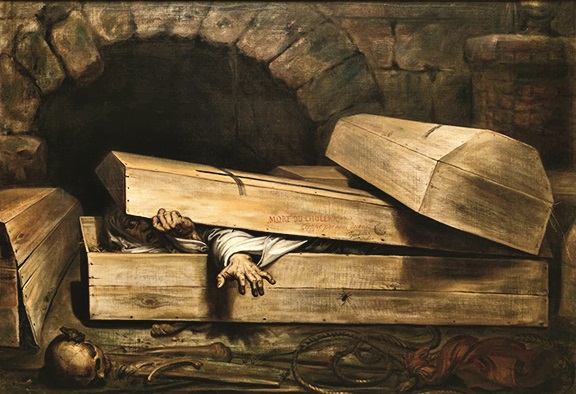A blank page is every author’s nightmare. But do authors always dare to put their nightmares on the page? For instance, Hans Christian Andersen — he was born this month — was a prolific writer for children. But while his tales — “The Princess and the Pea” and “Thumbelina”, for example — serve as bedtime stories the world over, the writer himself suffered from a fear of being buried alive in his sleep. As such, when he went to bed, he was often known to put a cautionary note by his bedside which said — “I only appear to be dead.” In fact, so oppressed was Andersen by this fear that he even asked for his veins to be cut open to confirm that he was dead before he could be buried.
Andersen, however, was not the only one: artists of all kinds — musicians, film-makers, painters — have had strange fears. If the Romantic composer, Frédéric Chopin, shared the same fear as Andersen — taphophobia — Alfred Hitchcock, a master of horror, was afraid of chicken eggs. Grasshoppers, among many other things, scared the living daylights out of the surrealist artist, Salvador Dalí. The author, Marcel Proust, on the other hand, suffered from severe agoraphobia, or the fear of open or crowded places. Proust’s most famous novel, In Search of Lost Time, begins: “For a long time, I went to bed early.” In reality, too, Proust was known to have spent 90 per cent of his life in bed, and worked in his cork-lined bedroom that cut off noise from the outside world. His friend, the writer, Léon-Paul Fargue, described him as “a man who no longer lives outdoors or by day”. For Franz Kafka, much celebrated for the nightmarish quality of his writing, sleep itself was a terror: “my insomnia only conceals a great fear of death. Perhaps I am afraid that the soul — which in sleep leaves me — will not be able to return.” This insomnia fused in his mind the realms of dream and reality, creating a state that leads his protagonist to wake up one day to find himself transformed into a gigantic insect in The Metamorphosis.
During his lifetime, Kafka burned 90 per cent of his works, and asked, as a last wish, for all his writings, be it notebooks, letters or manuscripts, to be burnt — “unread”. Could this be because he knew that his fears had seeped into all his writing? After all, having one’s darkest fears published might be no less traumatizing than divulging to the entire world one’s deepest insecurities. Yet, it was the opening line of The Metamorphosis — where Gregor Samsa wakes up as an insect — that had struck a chord with Gabriel García Márquez, so much so that he decided to take up writing professionally. Fear can then be a bridge between the author and the reader. Varied and unique as our fears might be, each of us surely has one.











